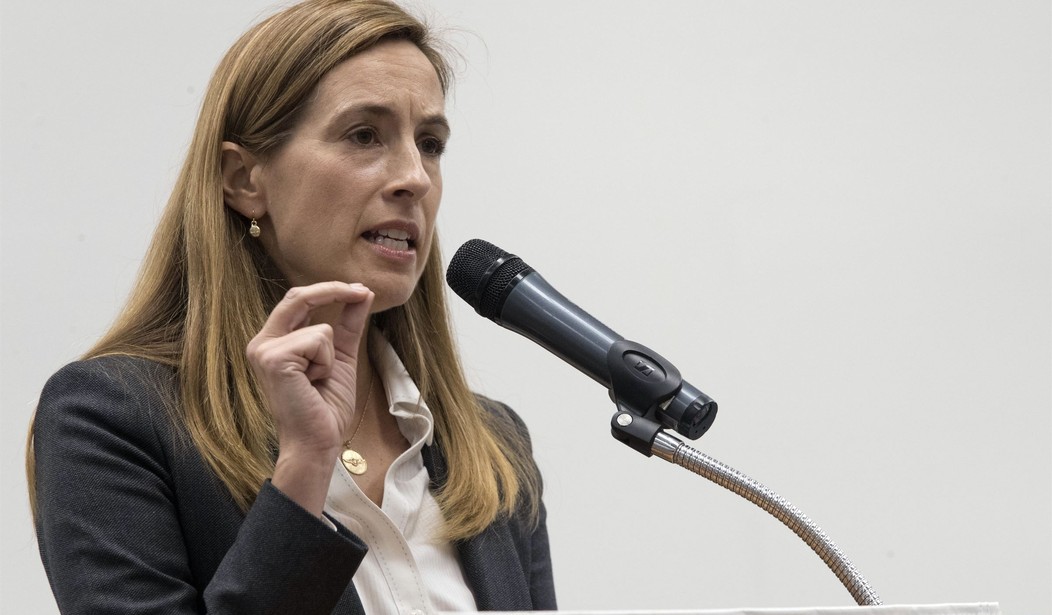Over the past year, the average residential price for electricity in New Jersey has increased from 20.7 cents per kilowatt hour to 25.3 cents per kilowatt hour, according to the U.S. Energy Information Administration.
In August, the New Jersey Board of Public Utilities approved a $100 credit ($50 in September and $50 in October) to provide a little relief to New Jersey ratepayers. “This should be helpful for people, but in no way solves the problem. I hope this helps some people get over the hump. This is a very difficult time,” Commissioner Zenon Christodoulou said after the bill credit announcement.
Although a $100 credit will help alleviate some of the financial stress New Jersey families face on a monthly basis, it is like putting a Band-Aid on a gunshot wound.
The main reason that New Jersey’s electricity rates are skyrocketing is because the Garden State has gone all in on climate alarmism and renewable energy madness over the past several years.
In 2018, New Jersey Gov. Phil Murphy stepped into office and immediately signed the Garden State back into the Regional Greenhouse Gas Initiative (RGGI).
According to its website, the RGGI “is a cooperative, market-based effort among the states of Connecticut, Delaware, Maine, Maryland, Massachusetts, New Hampshire, New Jersey, New York, Pennsylvania, Rhode Island, and Vermont to cap and reduce CO2 emissions from the power sector. It represents the first cap-and-invest regional initiative implemented in the United States.”
In 2011, former Gov. Chris Christie pulled New Jersey out of the RGGI, explaining it "does nothing more than tax electricity, tax our citizens, tax our businesses, with no discernible or measurable impact upon our environment."
However, the Murphys are over-the-top climate alarmists and dismissed Christie as a climate denier.
Upon signing the RGGI executive order, Murphy emphasized that “climate change is … a real threat to our state.”
In 2019, Murphy released the state’s “Energy Master Plan,” which calls for “100 percent clean energy by 2050.” In the years since, Murphy has supported massive offshore wind projects and “swift expansion of solar access.”
Predictably, the renewable rush job has failed to meet expectations. Yet, that has not deterred Murphy, who continues to double-down on unreliable, unaffordable, and unclean wind and solar.
All these years later, wind and solar only provide about 2.5 percent of total electricity generation in the Garden State. That is a small return for such a mammoth investment.
Although it is impossible to know exactly how much New Jersey has spent on its green transition over the past decade, we do know that the state’s Clean Energy Fund has been raided to prop up the state’s transit system and general fund to the tune of $2 billion over the past 15 years.
In a little more than a month, New Jersey voters will head to the polls as they choose the next governor of the Garden State.
Republican Jack Ciattarelli has made sky-high energy prices a chief issue during the campaign, blaming Murphy for the current state of affairs and warning would-be voters that his opponent, Democrat Mikie Sherrill, “supports the failed energy plan that tripled our electric bills this summer.”
Ciattarelli says he will pull New Jersey out of the RGGI, eliminate renewable energy mandates, and overhaul the state’s Energy Master Plan to prioritize baseload energy sources like natural gas and nuclear.
According to the polls, Ciattarelli and Sherrill are in a virtual dead heat. But the momentum lies with Ciattarelli, who has closed the gap in recent weeks as the electricity cost issue has entered center stage.
“I think there’s going to be a huge discussion on energy from now until November, because a lot of Democratic governors doubled down on green energy and have seen their electricity bills spike when offshore wind and other green energy sources have not come to fruition yet,” New Jersey Republican strategist Jeanette Hoffman told NBC News. I agree with Hoffman.
For more than a decade, blue state governors have touted their green energy policies as the future. They’ve promised lower costs, which they have failed to deliver. I think the American people are finally waking up and realizing that the green energy transition is a corrupt fantasy that benefits the wealthy and makes climate alarmists feel good while sticking average Americans with sky-high electricity bills and a less reliable grid.
Chris Talgo (ctalgo@heartland.org) is editorial director at The Heartland Institute.
Editor’s Note: Do you enjoy Townhall’s conservative reporting that takes on the radical left and woke media? Support our work so that we can continue to bring you the truth.
Join Townhall VIP and use the promo code FIGHT to get 60% off your VIP membership!





